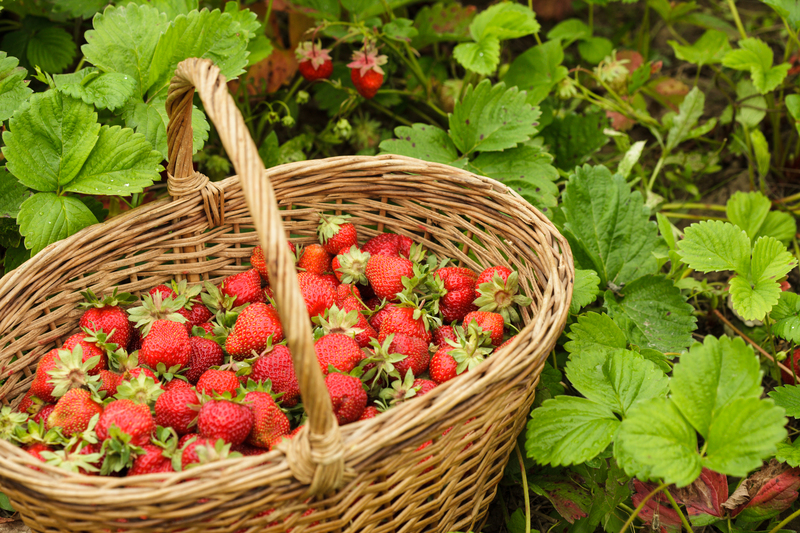Earth in Balance: The Climate Benefits of Gardening
Posted on 18/06/2025
In an era of increasing environmental awareness, individuals and communities alike are seeking practical ways to positively impact the planet. Gardening offers a powerful, accessible solution for contributing to climate change mitigation and long-term sustainability. From capturing carbon in the soil to fostering biodiversity, the climate benefits of gardening are extensive and deeply impactful.
Understanding the Connection Between Gardening and Climate Change
Climate change, driven primarily by the accumulation of greenhouse gases such as carbon dioxide (CO2), threatens ecological balance, human health, and economic stability worldwide. While large-scale solutions are essential, individual actions, especially those that promote green spaces and biodiversity, are crucial. Gardening for climate balance stands out as a meaningful, hands-on contribution that everyone can make.
The Science Behind Gardening and Climate Mitigation
Plants naturally absorb CO2 through photosynthesis, storing carbon within their tissues and the soil. Lawns, gardens, and urban green spaces thus become mini carbon sinks, helping to offset emissions from cars, factories, and other sources. In addition to sequestering carbon, sustainable gardening practices can:
- Improve Soil Health--Healthy soils store more carbon and support resilient ecosystems.
- Promote Biodiversity--Gardens provide habitat for pollinators, birds, and beneficial insects, supporting nature's delicate balance.
- Moderate Urban Temperatures--Vegetation cools cities and reduces the need for air conditioning, lessening energy use.
- Reduce Stormwater Runoff--Gardens help absorb rainfall, minimizing erosion and the carbon footprint of water management.

How Gardens Remove Carbon Dioxide from the Atmosphere
Carbon sequestration in gardens is central to their positive climate impact. Here's how the process works:
Photosynthesis and Carbon Storage
Through photosynthesis, plants capture atmospheric CO2, using it to grow leaves, roots, stems, and seeds. Some of the absorbed carbon becomes part of the living plant, whilst a portion is transferred to the soil through root exudates and decomposing plant material. Over time, this organic matter enriches the soil, locking carbon away for years or even decades.
Soil Health and Organic Matter
Regenerative gardening practices, such as composting, mulching, and cover cropping, increase soil organic matter and, thereby, soil carbon storage. The richer the organic content, the more resilient the soil is to drought, erosion, and nutrient loss--all while holding on to more carbon.
- Composting: Turning kitchen and yard waste into compost not only diverts organic material from landfills (where it emits methane) but also enriches the garden soil.
- Mulching: Organic mulches, such as leaves or wood chips, protect soil moisture, feed beneficial microbes, and gradually add carbon to the soil as they break down.
- Cover Cropping: Planting "green manure" crops in the off-season adds organic matter, protects soil, and increases nitrogen content.
Gardening for Biodiversity and Resilience
Biodiversity is a critical element of ecosystem health. Well-planned gardens support diverse communities of plants, insects, birds, fungi, and small mammals.
Enhancing biodiversity through climate-smart gardening offers several environmental advantages:
- Support for Pollinators: Native flowering plants provide food for bees, butterflies, and other pollinators vital to agricultural productivity and ecosystem function.
- Habitat Creation: Trees, shrubs, and wildflower zones give shelter and nesting sites for birds and beneficial insects.
- Pest Control: Diverse gardens attract predatory insects--nature's pest controllers--thus reducing the need for chemical pesticides.
Gardens with high biodiversity are more resilient to pests, diseases, and extreme weather, making them essential "climate buffers" within cities and neighborhoods.
Water Conservation and Climate-Friendly Gardening
Water is becoming an increasingly precious resource under climate change. Responsible gardening practices reduce water consumption and prevent runoff, helping communities adapt to shifting weather patterns.
- Rain Gardens: These plant-filled depressions capture stormwater, filtering pollutants and recharging groundwater--while reducing the burden on storm drains and treatment plants.
- Composting and Mulching: Conserves soil moisture, further reducing the frequency of watering.
- Drip Irrigation: Efficiently delivers water to plant roots, avoiding waste.
- Choosing Native and Drought-Tolerant Plants: Indigenous plants require less water, fertilizer, and chemical input, minimizing the garden's environmental impact.
Reducing Urban Heat and Improving Air Quality
Urban gardens and green roofs can cool city environments by providing shade and releasing water vapor through transpiration. Neighborhoods with abundant greenery can experience significantly lower temperatures during heatwaves and improved air quality due to airborne pollutant capture on leaves.
According to research, increased green cover can lead to measurable reductions in the urban heat island effect and ground-level ozone, making cities safer and more comfortable for residents.
Sustainable Practices That Multiply Climate Benefits
While any gardening is beneficial, certain approaches can maximize the positive climate impact of your green space. Here are some top strategies for sustainable, climate-resilient gardening:
1. Go Organic
- Eliminate or minimize the use of synthetic pesticides and fertilizers, which are energy-intensive to produce and emit greenhouse gases.
- Foster healthy soils with compost and natural amendments.
2. Increase Plant Diversity
- Fill your garden with a variety of species adapted to your local climate and soil.
- Integrate ornamental, edible, and native plants for a healthy, functional ecosystem.
3. Minimize Lawn Area
- Lawns require frequent mowing (which emits CO2), fertilizing, and watering. Replace sections of lawn with flowering meadows, vegetable beds, or shrub borders.
4. Plant Trees and Shrubs
- Trees are outstanding carbon sinks, with a high capacity for long-term carbon storage. They also shade homes, reducing cooling costs and further cutting household emissions.
5. Garden with Wildlife in Mind
- Install birdhouses, bee hotels, and insect shelters. Avoid using toxic chemicals.
- Let some areas go "wild"--a little untidiness encourages wildlife and enhances resilience.
6. Reuse and Recycle in the Garden
- Use reclaimed materials for raised beds, trellises, and paths.
- Compost food and garden waste to close the nutrient loop.
Eco-Friendly Gardening: Supporting Community and Global Goals
Widespread adoption of climate-friendly gardening supports larger environmental objectives, including:
- United Nations Sustainable Development Goals (SDGs): Urban gardens contribute to goals such as climate action, life on land, and sustainable cities and communities.
- Food Security: Growing your own fruits and vegetables reduces the carbon emissions associated with transporting and storing commercial produce.
- Community Resilience: Shared and public gardens foster community bonds, provide green spaces for recreation, and support mental health.
Gardening as a Climate Education Tool
School and community gardening projects are powerful educational platforms. By engaging with the natural world, individuals of all ages can gain a firsthand understanding of ecosystem dynamics, carbon cycling, and sustainable practices. Such experiential learning drives long-term environmental stewardship.
Practical Tips for Maximizing the Climate Benefits of Your Garden
Small changes can have outsized effects. Here's how to make your garden a force for good:
- Choose Perennials Over Annuals: Perennial plants require less tilling and disturbance, allowing soil carbon to build up over time.
- Compost Everything You Can: Divert organic waste from landfills and return nutrients to the soil.
- Collect Rainwater: Install rain barrels to capture excess water for garden use.
- Garden Organically: Skip chemical inputs and feed your soil naturally.
- Leave Leaves: Allow autumn leaves to decompose slowly in garden beds, nourishing soil life.
Engage with Local Gardening Initiatives
Participating in local gardening groups or urban agriculture initiatives often provides access to resources, workshops, and seed exchanges--all of which amplify the collective climate benefit.
Technological Innovations in Climate-Smart Gardening
Modern technology offers new tools for maximizing the climate benefits of gardening:
- Soil Sensors: Allow precise watering and nutrient monitoring, reducing waste.
- Solar-powered Garden Equipment: Battery-powered tools can be charged using renewable energy, eliminating fossil fuel use.
- Automated Drip Systems: Optimize irrigation for water and energy efficiency.
Combining tradition with innovation ensures gardening remains a relevant and effective tool in climate change mitigation.

The Future of Gardening and Climate Action
As cities expand and natural habitats shrink, the role of private and community gardens will only grow in significance. Urban and suburban gardeners have a unique opportunity to restore ecological balance--one yard, rooftop, or window box at a time.
Supporting pollinators, capturing carbon, reducing water use, and replacing resource-intensive lawns all add up to meaningful victories for the climate. By sharing your knowledge, produce, seeds, and passion, you can inspire others to join the movement.
Conclusion: Growing a Better Climate, One Garden at a Time
Earth in balance is not merely a vision--it's an ongoing process to which we can all contribute. Gardening for climate solutions offers a direct, deeply satisfying way to address environmental concerns, build healthier communities, and foster a more resilient planet. Whether you have a sprawling backyard, a balcony full of containers, or a single raised bed, your green space holds the power to benefit the climate.
As more people harness the climate benefits of gardening, the cumulative effect can be transformative. Start small, grow sustainably, and nurture the Earth--one plant, one patch, and one season at a time.


